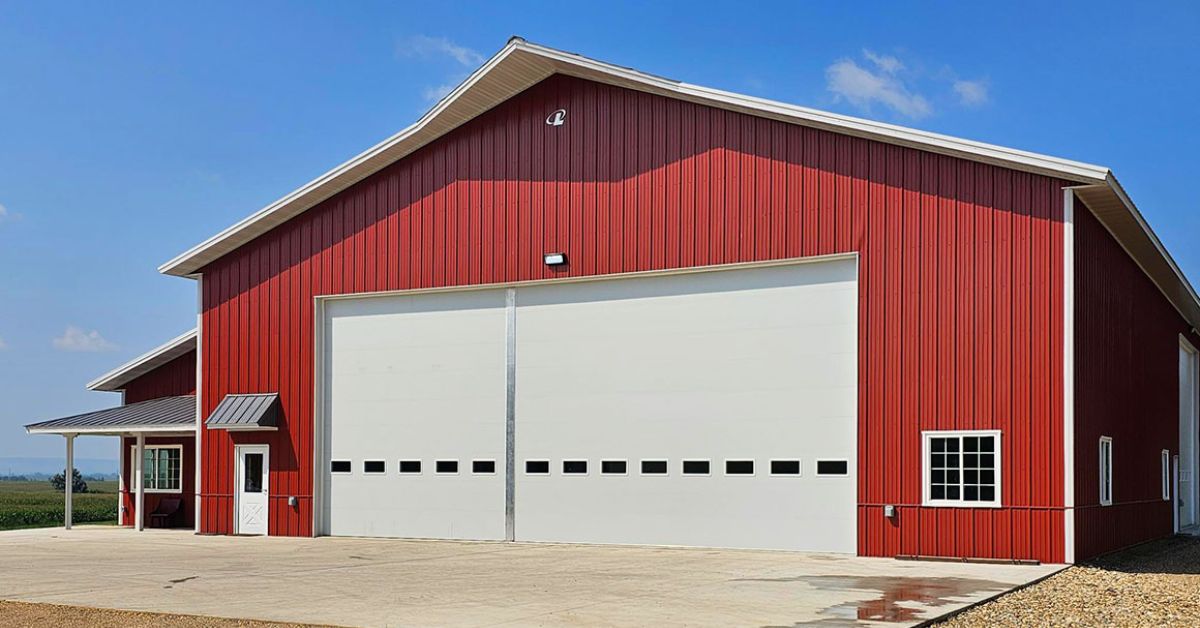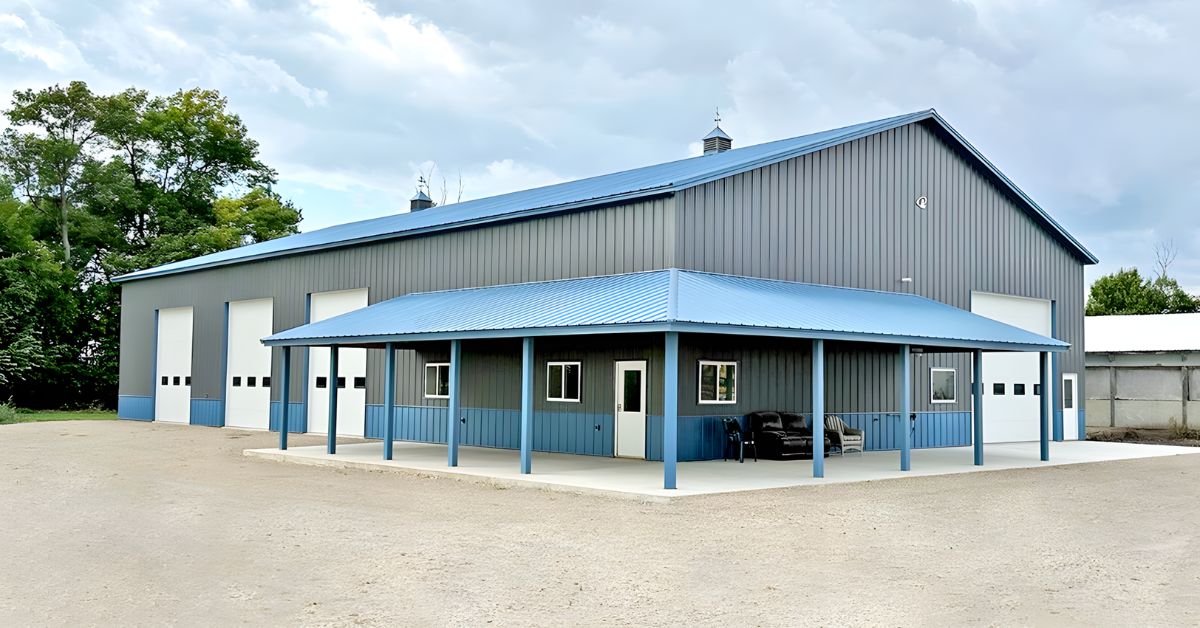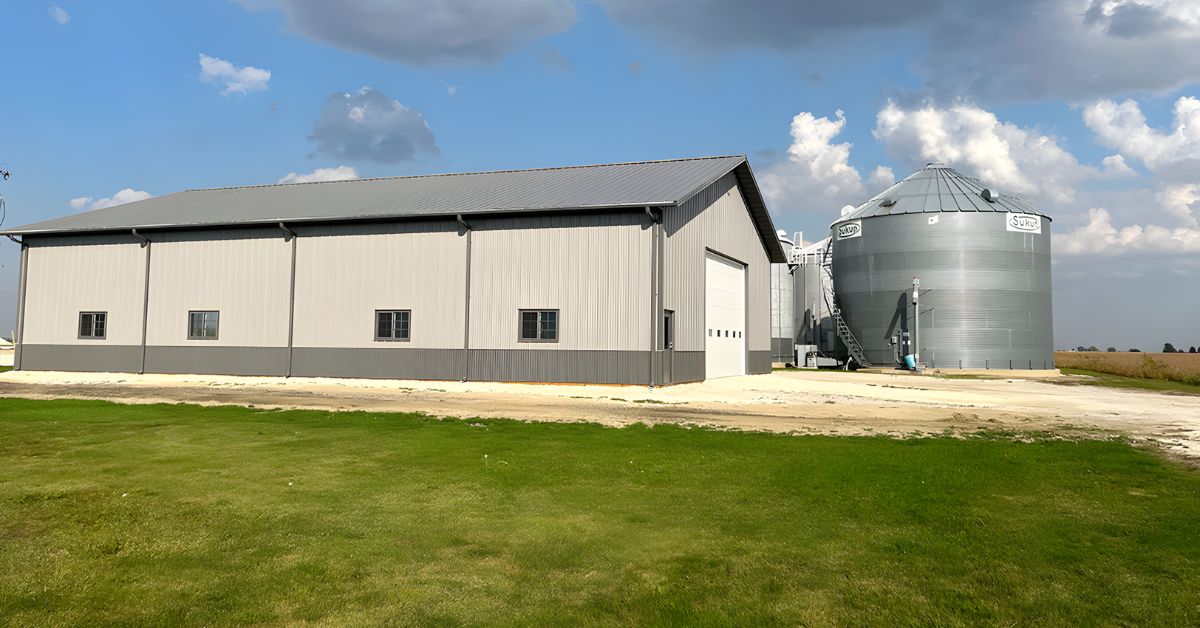Tips for Maximizing Agricultural Storage Building Space
.jpg)
For any modern farm or ranch, efficiency is the key to success. Your agricultural storage buildings are central to your operations, housing valuable equipment, supplies, and harvests. When these spaces are full of clutter, that disorganization can lead to wasted time, potential damage to assets, and unnecessary costs. Optimizing your storage is not just about tidiness; it’s a strategic move to enhance productivity and protect your investments.
A well-organized building ensures that you can find what you need quickly, maneuver large farm equipment safely, and protect your goods from damage. Whether you’re planning new agriculture storage buildings or looking to improve existing structures, maximizing your available space is a practical way to boost your farm’s efficiency.
This guide will walk you through practical tips for transforming your farm equipment storage buildings into models of efficiency. From simple organizational changes to strategic layout redesigns, these steps will help you reclaim valuable square footage and create a more functional, cost-effective space for your farm or ranch.
Assess Your Current Space Usage
The first step toward optimization is understanding what you’re working with. Take a thorough look at your current storage layout. Walk through your buildings and make notes. Where is space going to waste? Are there bottlenecks that hinder movement?
Look for underutilized areas, such as empty vertical space above equipment or unused corners. Pay attention to how you are currently organizing items. Are seasonal tools mixed with everyday equipment? Is there a logical system, or is it a free-for-all? Evaluating your existing setup will reveal clear opportunities for improvement and provide a baseline for your optimization efforts.
Go Vertical With Your Storage
One of the most effective ways to create more room in farm equipment storage buildings is to think vertically. The floor space is finite, but the height of your building offers a wealth of untapped storage potential.
- Shelving units: Install heavy-duty industrial shelving to store tools, spare parts, and smaller supplies. These shelves will keep things off the floor and make them easier to find.
- Stacking systems: Use stackable bins and containers for items like seeds, feed, or fertilizers. Label them clearly so that you know what’s inside at a glance.
- High-bay racking: For larger buildings, consider pallet racking systems. These are ideal for storing bulk items on pallets and taking advantage of the full height of your structure.
By building upwards, you free up valuable floor space for large machinery and high-traffic areas, instantly making your building feel larger and more organized.

Optimize Your Aisle Widths
Aisles are necessary for movement, but they can also consume a significant amount of space. The goal is to find the right balance between having enough room to safely maneuver equipment and maximizing your storage capacity.
Measure your largest piece of equipment and add a reasonable buffer for safe passage. This will determine the minimum required width for your main aisles. For secondary aisles or areas accessed on foot, you can often narrow the pathways. By carefully planning your aisle widths, you can reclaim precious square footage and make room for additional storage.
Implement an Inventory Management System
A disorganized storage space often leads to clutter and duplicate purchases. An effective inventory management system helps you keep track of what you have, where it is, and when you need to restock. This can be as simple as a labeled shelving system with a corresponding checklist or a more advanced digital solution.
When you know exactly what’s in your storage building, you avoid overstocking and can arrange items based on frequency of use. Place frequently used tools and supplies in easily accessible locations, and store seasonal items in less prominent areas until you need them. This systematic approach reduces clutter and makes day-to-day operations much smoother.
Consider Multi-Purpose Storage Designs
Today’s agriculture farm shops need to be adaptable. A building that serves a single, rigid purpose may not be the most efficient use of your investment. When planning a new building or renovating an old one, think about how it can serve multiple functions.
For example, could a section of your equipment storage also function as a workshop during the off-season? Can you use portable partitions to create temporary zones for different tasks? Designing for versatility allows you to adapt to changing seasonal needs without requiring new construction, making your farm or ranch more resilient and cost-effective.
Improve the Building Layout for Better Flow
The layout of your storage building has a major impact on workflow. A poorly designed layout can create traffic jams and make simple tasks more time-consuming.
Sketch a new floor plan that prioritizes a logical flow of movement. Create clear pathways from entrances to key storage zones. When possible, aim to group related items together. For example, you might store all planting equipment in one area and harvesting tools in another. A well-thought-out layout not only increases usable space but also improves safety and efficiency by reducing unnecessary movement.
Manage Climate Control for Space and Protection
Proper climate control is essential for protecting stored goods like seed, feed, and sensitive equipment. However, HVAC systems and insulation can take up space. Integrate climate control systems thoughtfully into your building’s design.
For instance, install ductwork along ceilings or walls where it won’t interfere with vertical storage. Choose insulation that offers a high R-value without excessive thickness. By maintaining the right temperature and humidity, you prevent spoilage and rust, ensuring the items you store remain in good condition. This change also means you won’t need to allocate extra space for damaged or replacement goods, further optimizing your storage capacity.

Prioritize Safety in Your Storage Plan
An organized space is a safer space. When you maximize your storage area, it’s crucial to implement safety protocols for loading, unloading, and accessing stored items.
- Ensure that stacked items are stable and secure to prevent them from falling.
- Keep aisles and walkways clear of obstructions to avoid trip hazards.
- Make sure there is adequate lighting throughout the building, especially in areas with high shelves or racks.
- Establish clear procedures for operating machinery within the building to prevent collisions.
Integrating safety into your storage plan protects your team, your equipment, and your products, making your entire operation more secure and reliable.
Build a Foundation for Future Success
Maximizing the space in your agricultural storage buildings is more than just a spring-cleaning project. It is a fundamental part of running an efficient and profitable farm or ranch. By assessing your current usage, utilizing vertical space, and implementing smart organizational systems, you can transform your storage areas into valuable assets that support your long-term goals.
These improvements will help you save time, reduce costs, and create a safer working environment. A well-organized building is a sign of a well-run operation, reflecting a commitment to quality and efficiency that paves the way for future growth.
Are you ready to design a storage solution tailored to your needs? Explore our building options and see how Lester Buildings can bring durable, customizable, and efficient storage to your farm.
